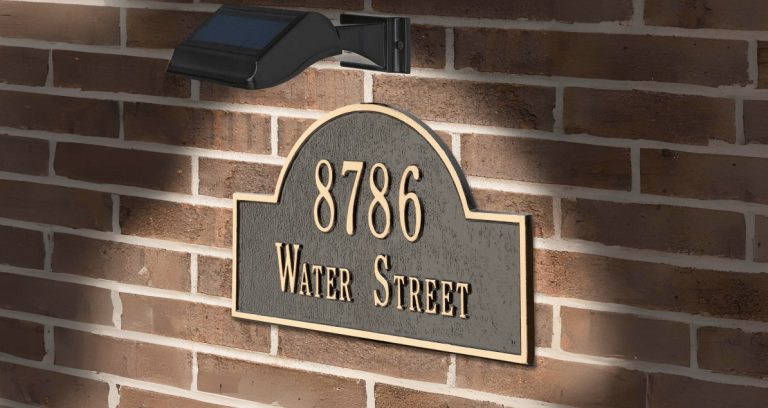The kitchen is often referred to as the heart of the home, and for good reason. It’s a space where families gather, meals are prepared, and memories are made. Whether you’re a professional chef or someone who simply enjoys cooking occasionally, the design and functionality of your kitchen have a significant impact on your daily life. With the growing trend of home improvement and remodels, many homeowners are seeking ways to optimize their kitchens not just for style, but for efficiency, organization, and comfort.
If you’re considering a kitchen renovation or simply want to make a few improvements, this guide outlines the top 10 kitchen tips to elevate your home improvement project. These tips strike a balance between aesthetics, practicality, and budget, ensuring your kitchen becomes a space you’ll truly enjoy.
1. Maximize Storage with Clever Solutions
One of the most common frustrations in a kitchen is the lack of storage. However, creative solutions can help you make the most of the space available. Cabinet organizers, pull-out pantry shelves, and vertical storage options can significantly improve kitchen organization.
Install drawer dividers for utensils and use pull-out trays or lazy Susans for cabinets to keep items accessible and organized. Consider incorporating upper cabinets that extend all the way to the ceiling to maximize vertical storage, a great option for storing rarely used items. Adding cabinets that feature pull-out baskets or built-in organizers can be a game changer when it comes to maximizing every inch of kitchen space.
2. Choose Quality Materials That Stand the Test of Time
When it comes to a kitchen remodel, materials play a significant role in both aesthetics and functionality. Opting for quality materials will ensure that your kitchen not only looks great but lasts for years. For countertops, materials like granite, quartz, or butcher block are durable and stylish. These options are not only resistant to wear and tear, but they are also easy to maintain.
For cabinetry, solid wood or plywood with a high-quality veneer will hold up better over time compared to cheaper, particleboard-based materials. Stainless steel, though often seen as an industrial option, is another durable choice for appliances and finishes, offering longevity and ease of cleaning. Whether you’re upgrading your floors, countertops, or cabinetry, investing in materials that stand the test of time will save you money in the long run.
3. Opt for an Open Layout for Improved Flow
One trend that continues to gain popularity in kitchen design is the open-concept layout. An open kitchen seamlessly flows into adjacent spaces like the dining room or living area, creating a more expansive and inviting atmosphere. This design approach can also improve traffic flow and make it easier for family members or guests to interact while meals are being prepared.
If you’re working with a smaller space, consider removing unnecessary walls or installing a kitchen island to create a more open feel. This concept is especially effective for those who like to entertain, as it keeps the cook involved in conversations while preparing food. Incorporating open shelving or glass-front cabinets further enhances the sense of openness.
4. Prioritize Lighting for Function and Ambiance
Lighting is crucial in a kitchen, not only for its functionality but also for its overall ambiance. A well-lit kitchen ensures that tasks such as chopping, reading recipes, and cooking are carried out safely and efficiently. Ideally, your kitchen should feature a combination of task, ambient, and accent lighting.
Task lighting, such as under-cabinet lights or pendant lights above the island, provides focused illumination for prep areas. Ambient lighting, such as recessed ceiling lights or a central chandelier, creates a warm, inviting glow. Finally, accent lighting can be used to highlight architectural features or design elements, like artwork or unique cabinetry.
When planning your lighting, be sure to choose energy-efficient LED bulbs that provide plenty of light while reducing electricity costs.
5. Upgrade Your Appliances for Efficiency
Outdated kitchen appliances can not only be inefficient, but they can also affect the overall look of the space. Upgrading to modern, energy-efficient appliances will not only make your kitchen more functional, but it can also save you money over time. Choose Energy Star-rated appliances, which consume less energy and reduce long-term utility costs.
When selecting appliances, consider your specific needs. For example, if you do a lot of baking, invest in a high-quality oven with convection features. For those who enjoy fresh smoothies or juices, a powerful blender might be an essential addition. In addition, consider the size and layout of your appliances—integrating appliances into cabinetry for a seamless look can enhance the aesthetic appeal of your kitchen while ensuring everything is within arm’s reach.
6. Use Color Strategically to Enhance Mood and Function
Color plays a significant role in the mood and functionality of your kitchen. Light colors, such as whites, soft greys, and pastels, can make a small kitchen feel larger and more open. These shades are especially effective in a compact kitchen where maximizing the sense of space is a priority. On the other hand, darker tones such as navy, charcoal, or forest green can add depth and drama to larger kitchens.
In addition to wall color, consider using color to highlight specific features in your kitchen, such as the cabinetry, backsplash, or even the kitchen island. A bold pop of color can provide an exciting contrast and create a focal point. However, it’s important to balance bold hues with more neutral elements to avoid overwhelming the space.
7. Incorporate Smart Technology for Convenience
As technology continues to evolve, it’s increasingly being integrated into home improvement projects, and the kitchen is no exception. Smart kitchen devices can make cooking and cleaning more efficient, providing convenience at the touch of a button.
From smart refrigerators that track grocery inventories and suggest recipes to voice-controlled assistants that help with meal planning, there are plenty of options to make your kitchen smarter. Consider investing in smart ovens that can be preheated remotely, or smart faucets that offer touchless operation, improving both convenience and hygiene. These modern appliances can make meal preparation easier, save time, and add an element of innovation to your kitchen.
8. Create a Functional Kitchen Island
The kitchen island has become a central element in modern kitchens. Not only does it provide extra countertop space for food prep and serving, but it can also function as additional storage, seating, and even a place to entertain guests.
If your kitchen space allows for it, consider adding a large, multi-functional island. This can include built-in storage underneath for pots, pans, and utensils, as well as a wine rack or bookshelves for cookbooks. For a truly versatile option, you can incorporate a sink or even a stovetop into the island, turning it into a focal point for both cooking and socializing.
9. Add a Backsplash for Style and Practicality
A backsplash serves both a practical and aesthetic purpose. It protects the wall behind your stove and sink from splashes, spills, and stains while also adding a touch of personality to the kitchen.
Consider using tile, glass, or even stainless steel for a backsplash material that complements your kitchen’s overall style. Subway tiles are a classic choice, while bold patterns or geometric shapes can inject modern flair. For a more eco-friendly approach, look for backsplash materials made from recycled glass or sustainable stone options.
A well-designed backsplash can serve as a focal point, bringing together the colors and textures of your kitchen while adding character to the space.
10. Don’t Forget the Finishing Touches
Once your major renovations are complete, it’s time to focus on the finishing touches that will bring your kitchen to life. Small changes such as new hardware, decorative accessories, and updated fixtures can elevate the space.
For example, swapping out old cabinet handles for sleek, modern pulls can dramatically change the look of your cabinetry. Consider adding plants, such as herbs on a windowsill or a small indoor garden, to bring some freshness and life to the room. Stylish countertops and statement lighting fixtures can also contribute to your kitchen’s overall design while enhancing its functionality.
Conclusion
Improving your kitchen doesn’t have to be an overwhelming task. By following these top 10 kitchen tips, you can create a space that is not only functional and efficient but also beautiful and inviting. Whether you’re tackling a full renovation or simply making small updates, these changes will help you optimize your kitchen for both everyday use and long-term enjoyment. The key is to focus on practicality, quality materials, and smart design choices that suit your lifestyle, all while staying within your budget. With these strategies, your kitchen will truly become the heart of your home—both in function and style.















